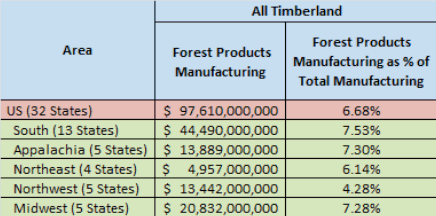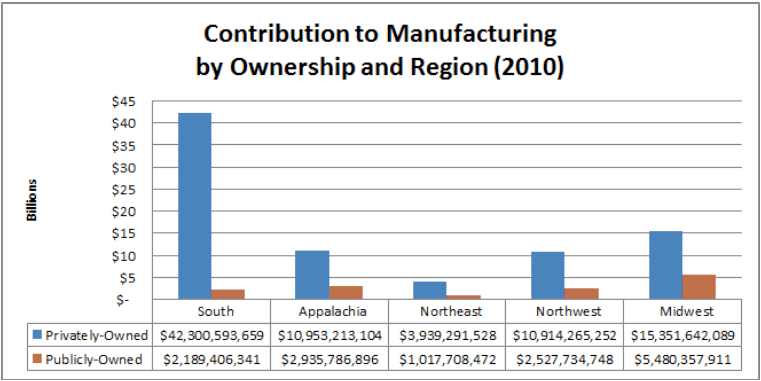July - September 2013
Economic Contribution: The Manufacturing of Forest Products
Posted on August 27, 2013 by Suz-Anne Kinney
Forest2Market recently completed an economic impact study for the National Alliance of Forest Owners. The study quantifies the contribution that forestry-related industries make to state, regional and national economies. The following map identifies the regions that were the subject of the study.

The largest number of timberland acres can be found in the South, which is made up of 13 states. The Northwest has less than half as much as the South. Between 80-90 percent of timberland in the South, Appalachia and the Northeast is privately owned. In the Midwest, 65 percent is privately owned. The Northwest is the only region in which the majority of the timberland is publically owned; just 36 percent is privately owned.

One of the factors we quantified in the study was the extent to which the manufacture of forest products- including lumber, panels, wood pellets, paper, packaging and furniture-contributes to the economy. In 2010, that contribution totaled nearly $100 billion annually. (It should be noted that 2010 was hardly a banner year for demand for forest products; new residential construction in the US remained around recession lows.) The following table shows the total value of all manufacturing shipments. End products made from timber represented 6.68 percent of all the manufacturing that occurred in the US in 2010.

The following figure shows the breakdown of manufacturing shipments for each region by ownership type. The South's privately owned timberland represents the bulk of forest products manufacturing in the US; end products made from timber are 7.16 percent of the region's total manufacturing.

The following table shows the gulf between the contribution made by private and public timberland. Nationwide, end products made from timber that originates on publicly-owned land are less than 1 percent of total manufacturing. By contrast, end products sourced from privately-owned timberland represent 5.71 percent of all manufacturing. Of the total contribution to manufacturing, end products sourced from private timberland is more than 85 percent of the total.
